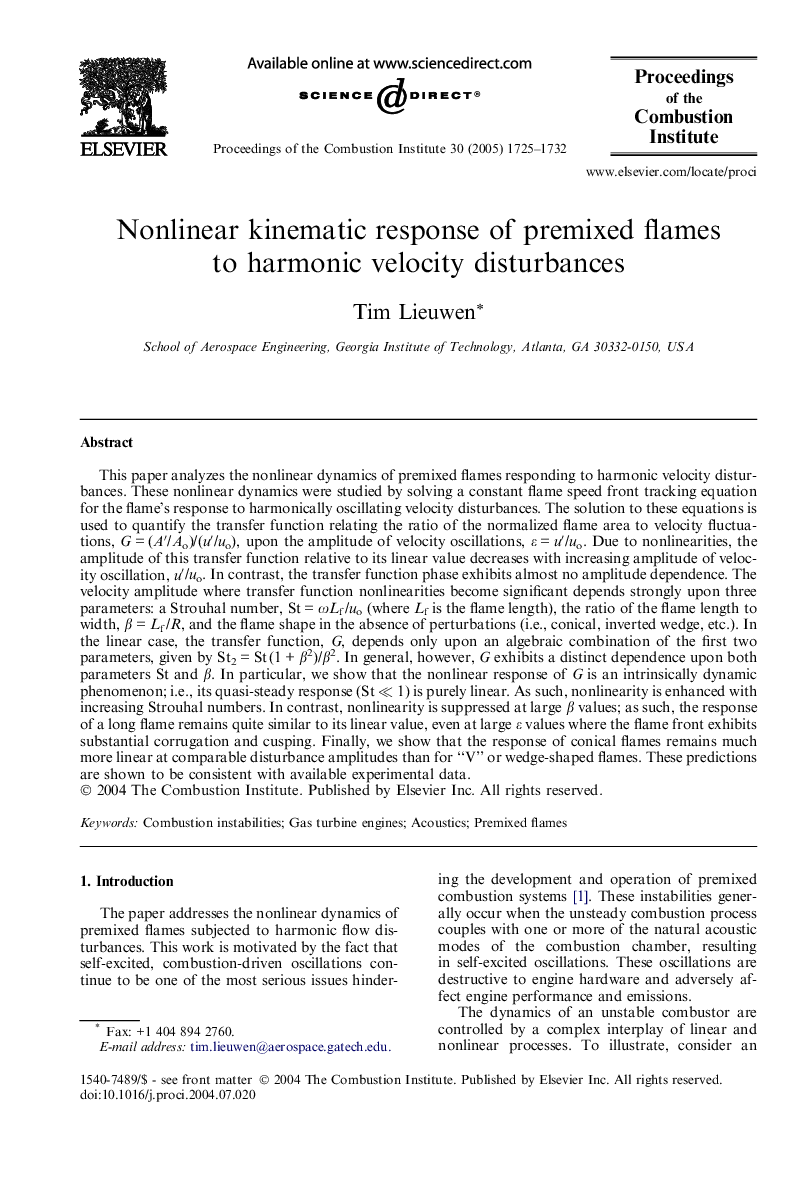| کد مقاله | کد نشریه | سال انتشار | مقاله انگلیسی | نسخه تمام متن |
|---|---|---|---|---|
| 240911 | 1427930 | 2005 | 8 صفحه PDF | دانلود رایگان |

This paper analyzes the nonlinear dynamics of premixed flames responding to harmonic velocity disturbances. These nonlinear dynamics were studied by solving a constant flame speed front tracking equation for the flame’s response to harmonically oscillating velocity disturbances. The solution to these equations is used to quantify the transfer function relating the ratio of the normalized flame area to velocity fluctuations, G = (A′/Ao)/(u′/uo), upon the amplitude of velocity oscillations, ε = u′/uo. Due to nonlinearities, the amplitude of this transfer function relative to its linear value decreases with increasing amplitude of velocity oscillation, u′/uo. In contrast, the transfer function phase exhibits almost no amplitude dependence. The velocity amplitude where transfer function nonlinearities become significant depends strongly upon three parameters: a Strouhal number, St = ωLf/uo (where Lf is the flame length), the ratio of the flame length to width, β = Lf/R, and the flame shape in the absence of perturbations (i.e., conical, inverted wedge, etc.). In the linear case, the transfer function, G, depends only upon an algebraic combination of the first two parameters, given by St2 = St (1 + β2)/β2. In general, however, G exhibits a distinct dependence upon both parameters St and β. In particular, we show that the nonlinear response of G is an intrinsically dynamic phenomenon; i.e., its quasi-steady response (St ≪ 1) is purely linear. As such, nonlinearity is enhanced with increasing Strouhal numbers. In contrast, nonlinearity is suppressed at large β values; as such, the response of a long flame remains quite similar to its linear value, even at large ε values where the flame front exhibits substantial corrugation and cusping. Finally, we show that the response of conical flames remains much more linear at comparable disturbance amplitudes than for “V” or wedge-shaped flames. These predictions are shown to be consistent with available experimental data.
Journal: Proceedings of the Combustion Institute - Volume 30, Issue 2, January 2005, Pages 1725–1732